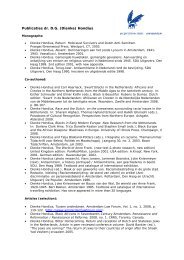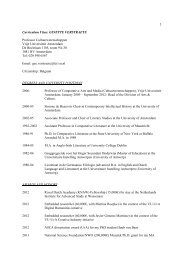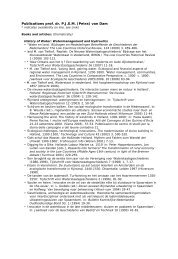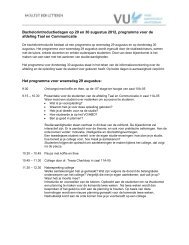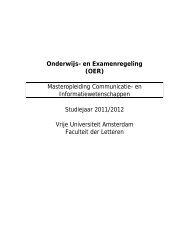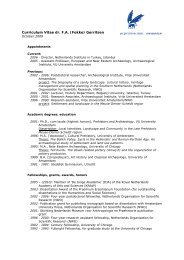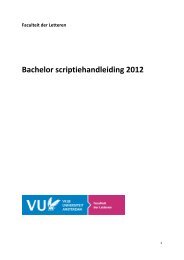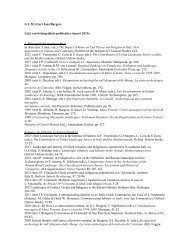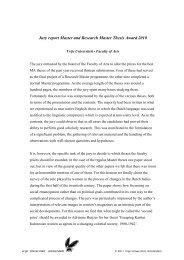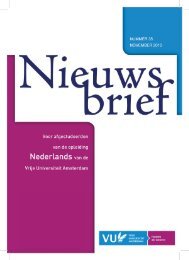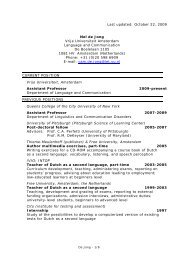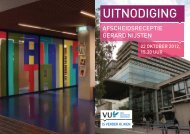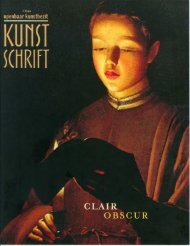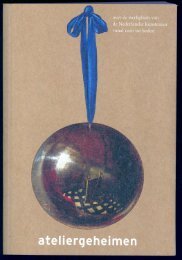You also want an ePaper? Increase the reach of your titles
YUMPU automatically turns print PDFs into web optimized ePapers that Google loves.
'Penetrating to the heart of nature deeper than nature itself- that is his<br />
dream. It is the ambition of a cold-blooded Prometheus, who instead of<br />
insultingjupiter, studies hisworkson hisbehalf to discover their secret.<br />
As an artist all hè asks of knowledgc is the power to create, to give life.'22<br />
Séallles' interpretation of Leonardo's drawings as the expression of a visionary<br />
dream would probably have appealed to Kandinsky. The samc goes<br />
for Eugène Müntz's ideas in hïs Leonard de Vind; l'artiste, lepemeur, Ie savantof<br />
1899. Müntz saw Leonardo's texts on storms and the deluge - to<br />
which hè however devoted less attcntion than Séaiiles — as proof of an exceptional<br />
poctic genius. Da Vinci might have been inspired by Petrarch<br />
and his texts also vied with Virgil's dcscriptions of nature in his Georgics;<br />
'lóth century Italian literature has produced nothing better in the field of<br />
descriptive poetry, the recording of landscapes, or of chc phenomena of the<br />
atmosphere and of light'.23 According to Müncz, these poetic descriptions<br />
'of the Zephyr and the storm' (de Zéphyr et de l'ouragan) demonstrated Leonardo's<br />
ability to go to the heart of divine nature (l'essence divïne); they also<br />
cestified to his sense of his affinity with God, who both creates and destroys.<br />
The prevailing image of Leonardo was thus expanded by Séaiiles and<br />
Müntz and this formed the framcwork for their analysis of his writings<br />
about and drawings of the deluge and storms. Moreover they could draw<br />
on recent editions of Leonardo's texts. The fashionable interpretation of<br />
Da Vinci's work had also created a dcmand for biiingual publications of his<br />
writings. There were successive editions in the i88os in Germany, England<br />
and France, all of them including the texts on the Deluge and on storms.24<br />
The extract in Merezhkovskv's later novel, the note that is in Beltraffio's diary,<br />
is just a very concise summary.<br />
Leonardo's original instructions for illustrating a storm and the Deluge are<br />
too numerous anddetailcd to quote here in full, so I will confine myself to<br />
itemizing the most salient motifs not mentioncd in Merezhkovsky's novel<br />
— the downfaü of cities whose walls and high buildings are shattered by the<br />
forces of nature; ships that capsize or are wreckcd by the fury of the waves;<br />
forests on fire; landslides; broken boulders that fall into the torrents,<br />
blocking thevalleys andcausing chcswollen rivers to break their banks;eddying<br />
whhipools; heavy downpours of rain in the atmosphere; waves<br />
brcaking against each other or against cliffs or rebounding off various drifting<br />
objects only to surge up as foam into the air before falling back; a sky<br />
full of scactered clouds and of the dust thrown up by horses as they panic<br />
and bolt and by the broken pieces of rocks and buildings, rendering the<br />
motion of the wind and currcnts of air visible.25<br />
Reading Ober das Geistige in der Kunst, one can hcar the echoes of Leonardo's<br />
account of the down fall of cities. If Kandinksy did indeed consult<br />
a translation of Da Vinci's Trattato della Pittura, it may have been the<br />
460 Paul van den Akker



